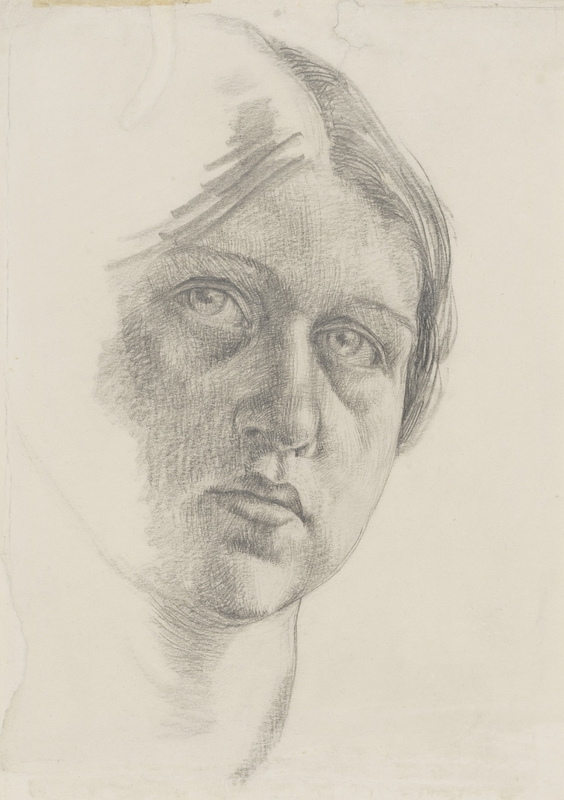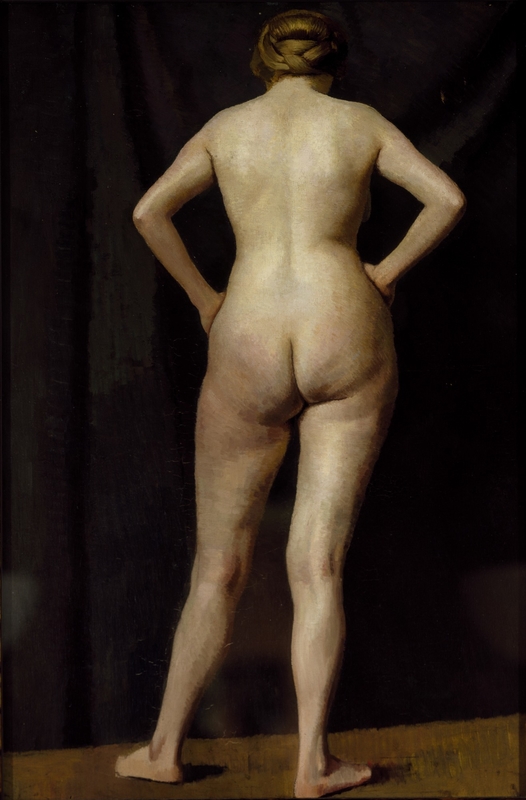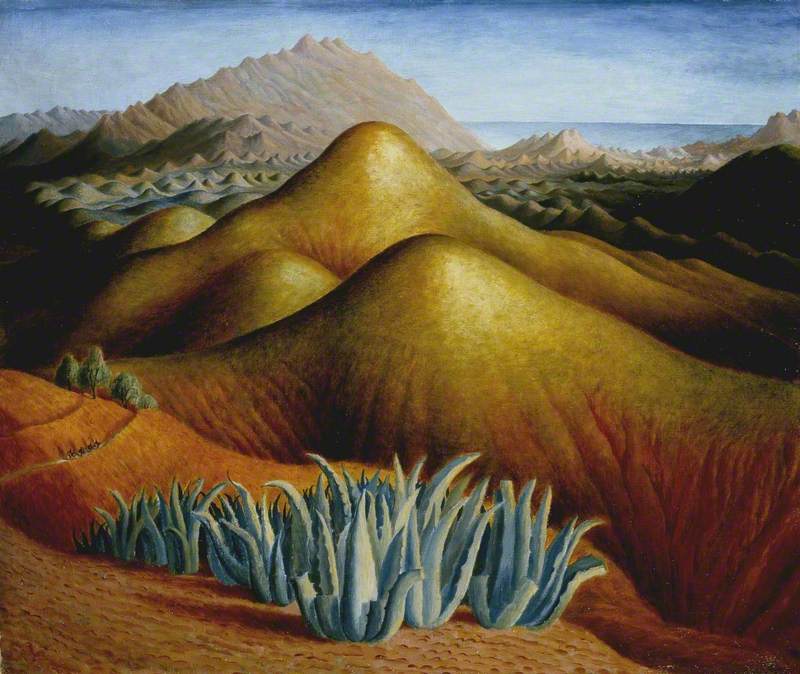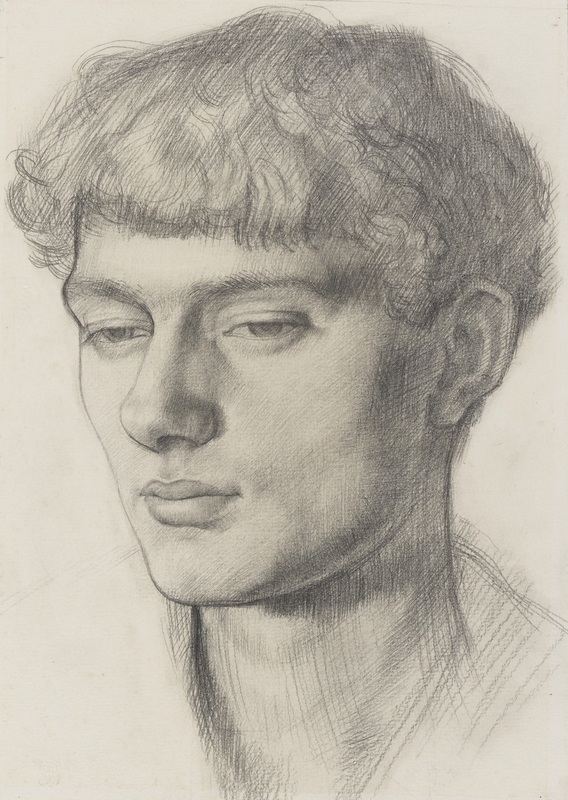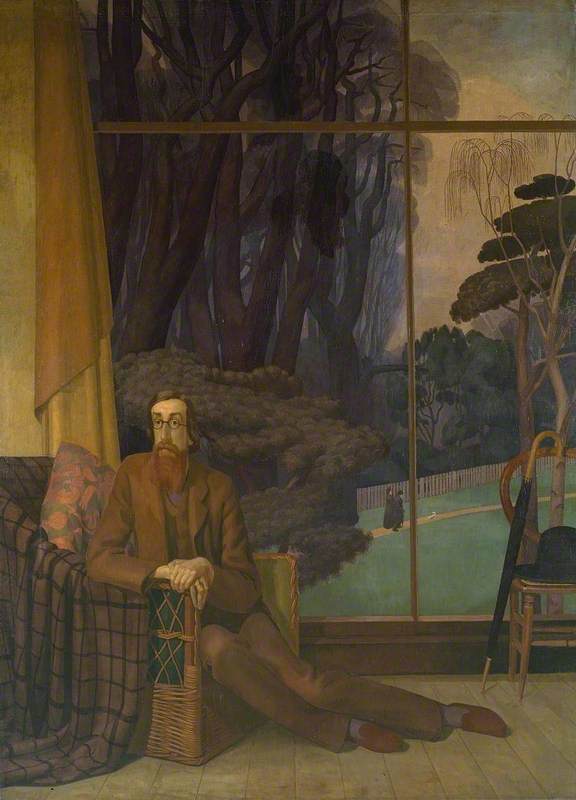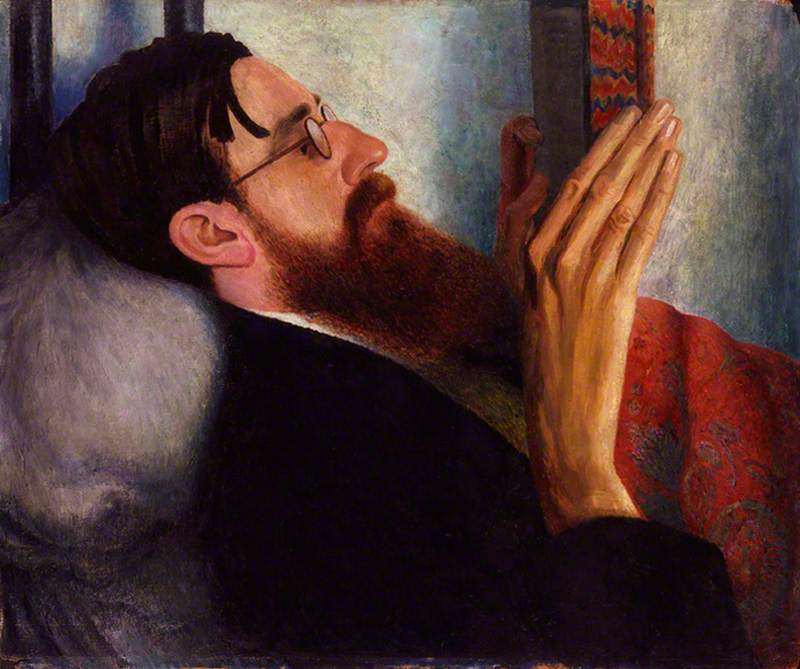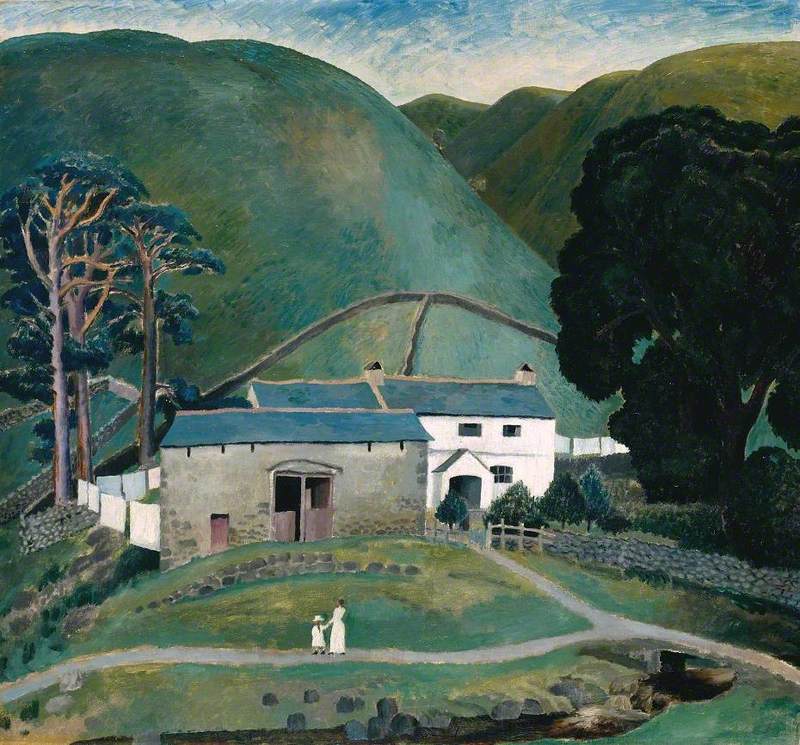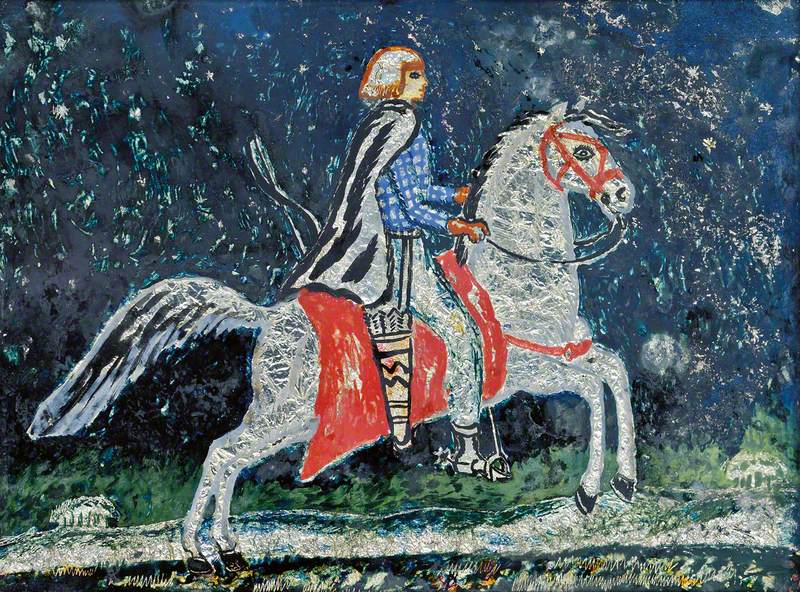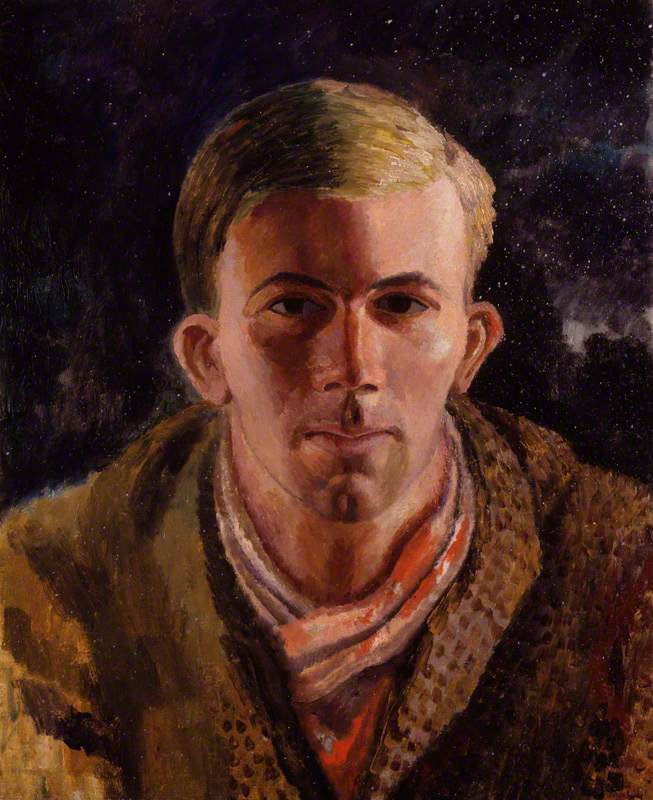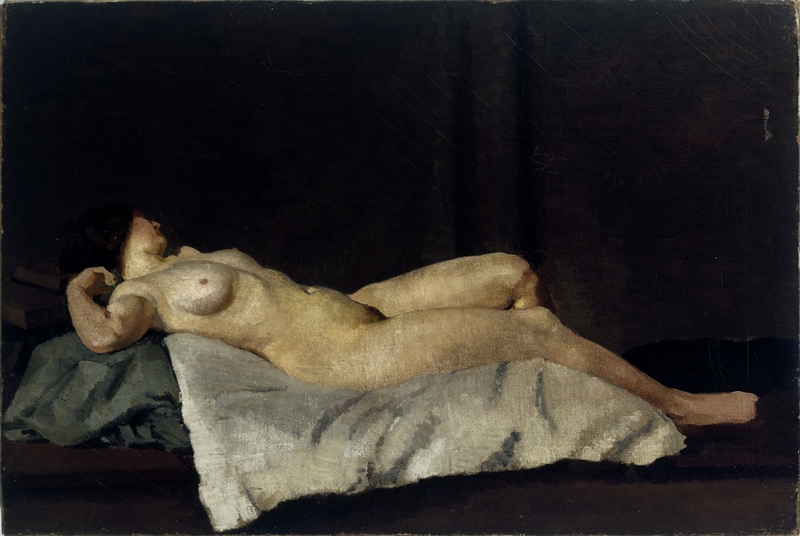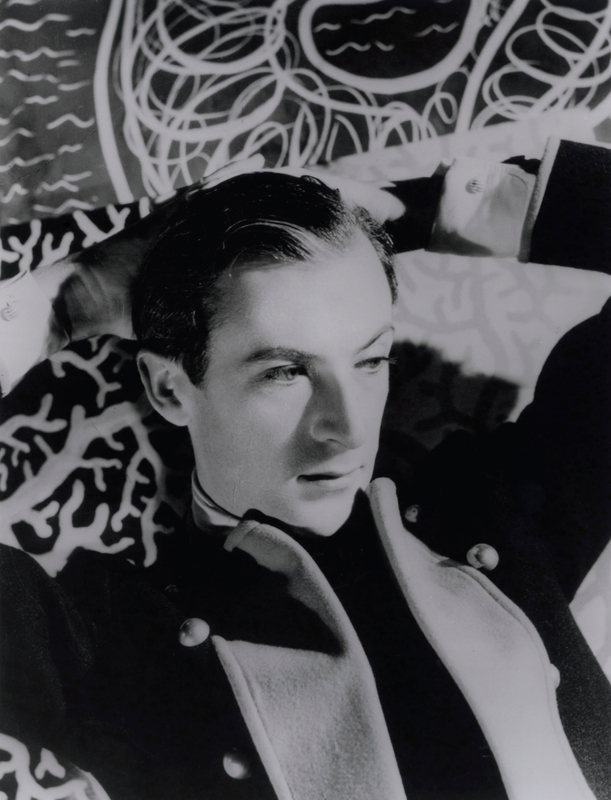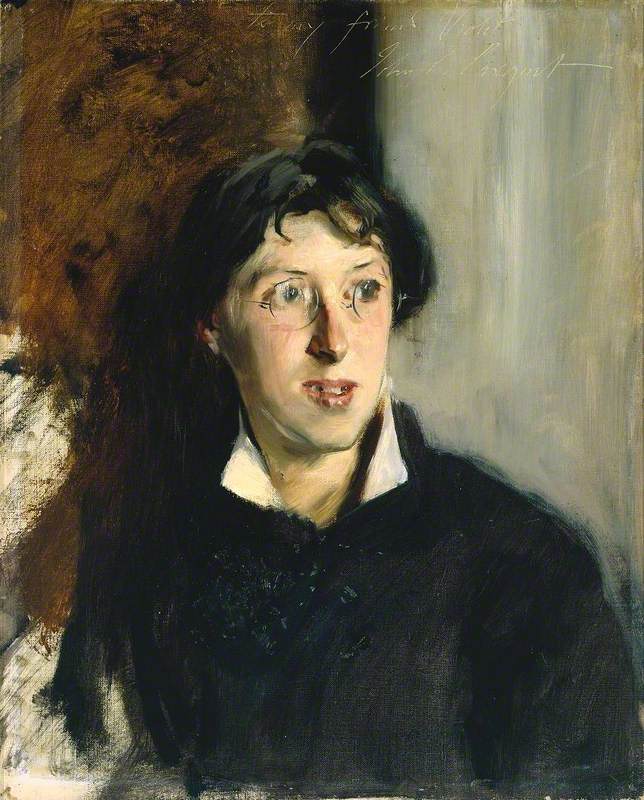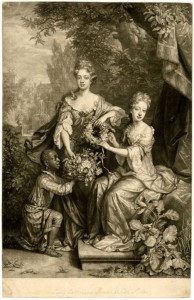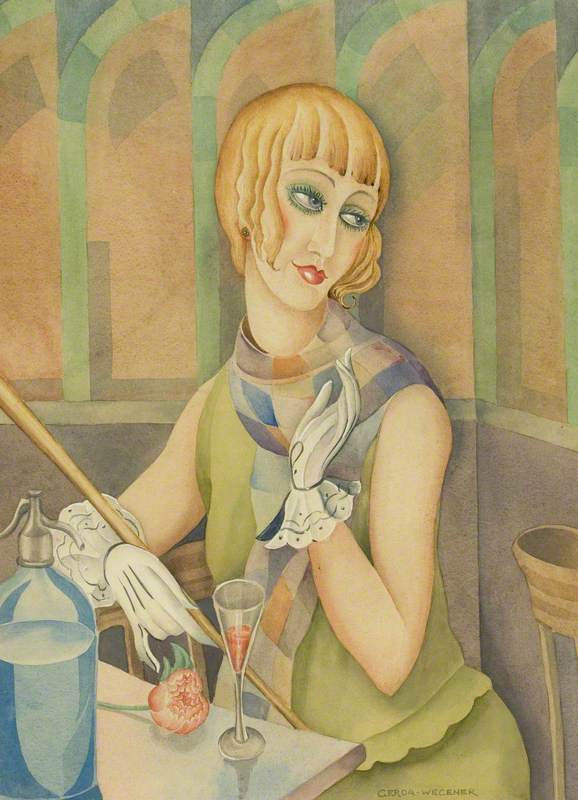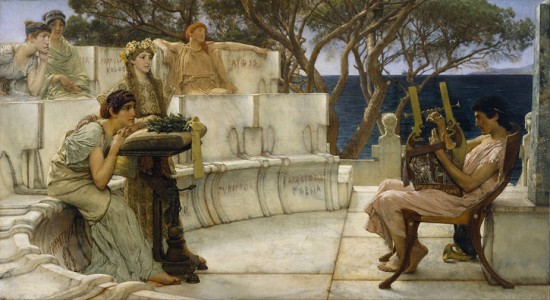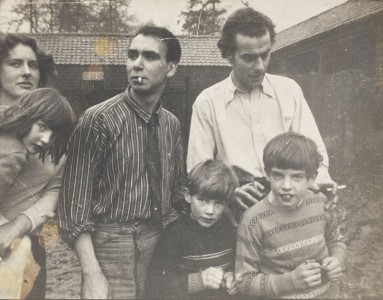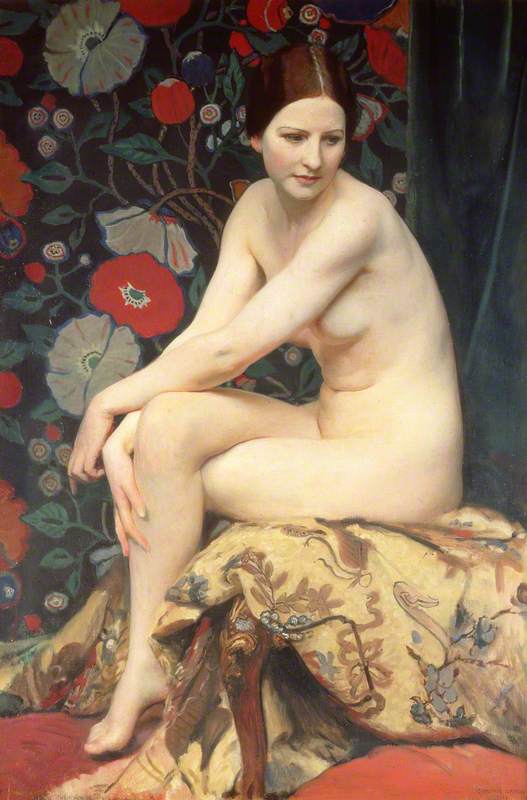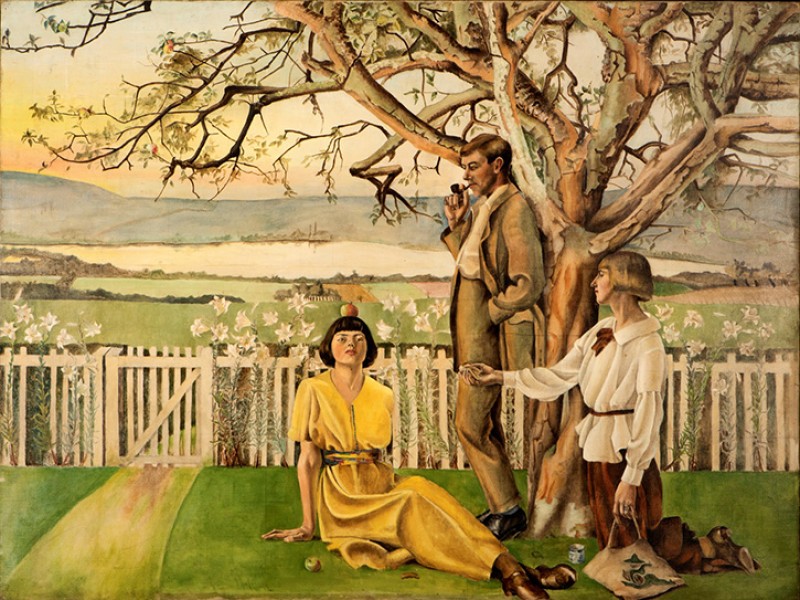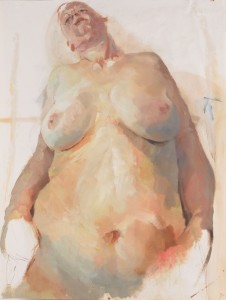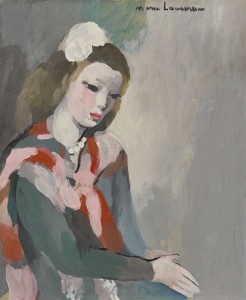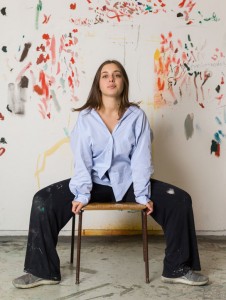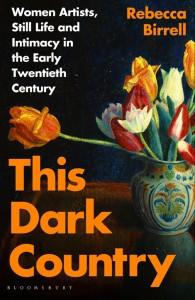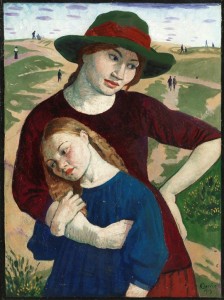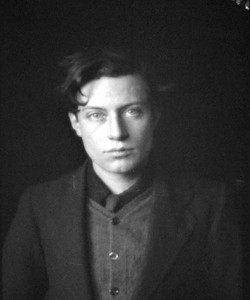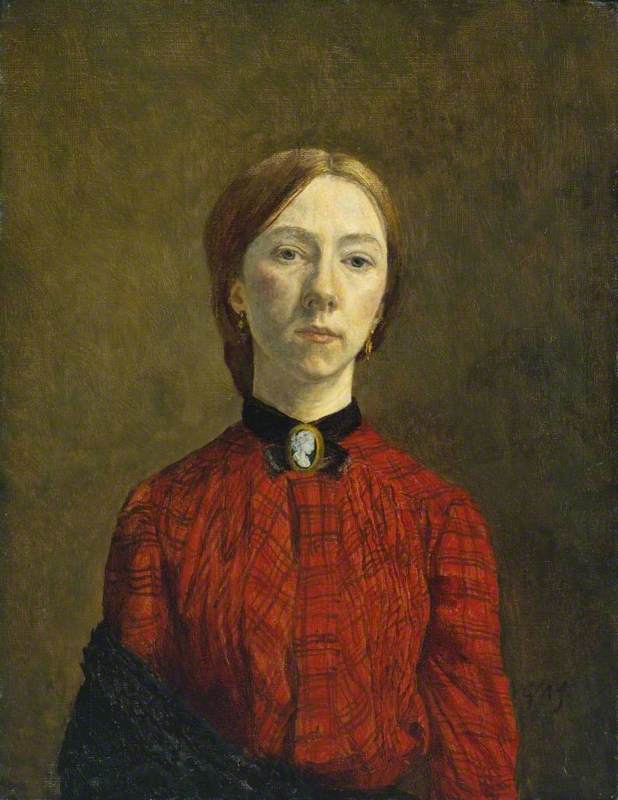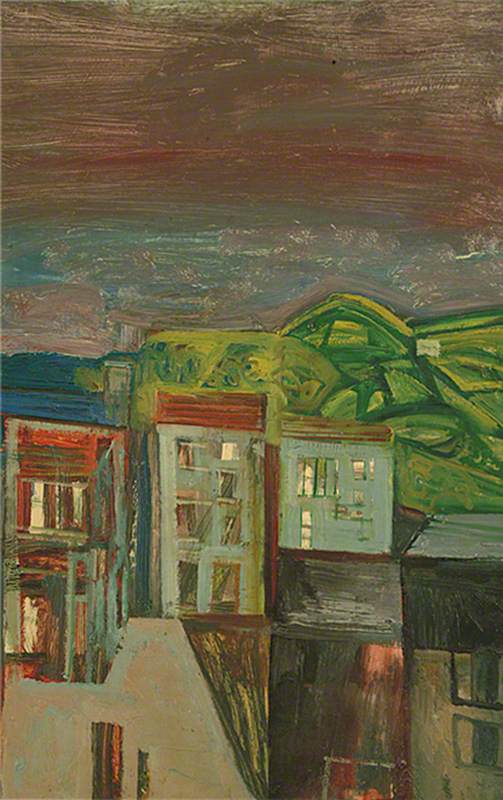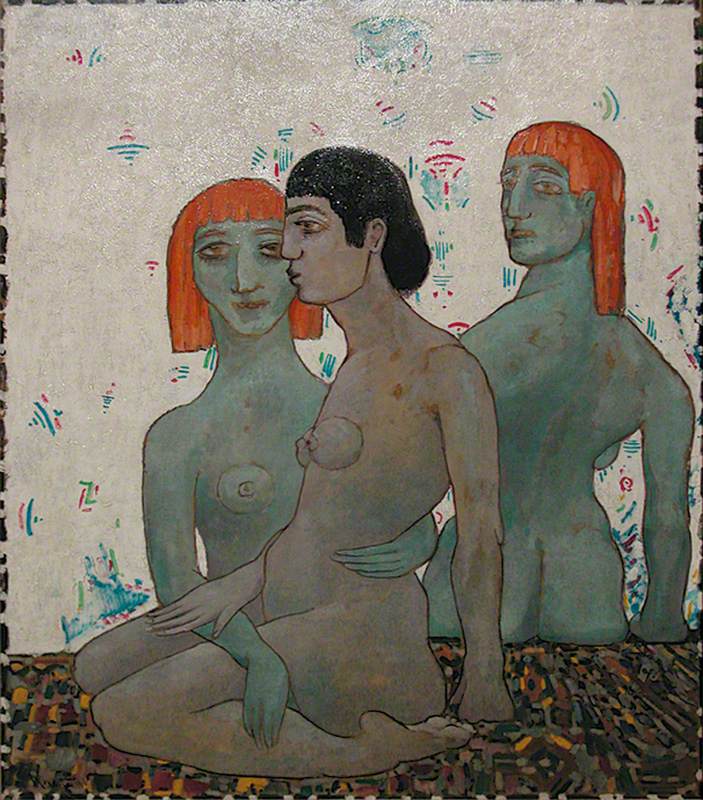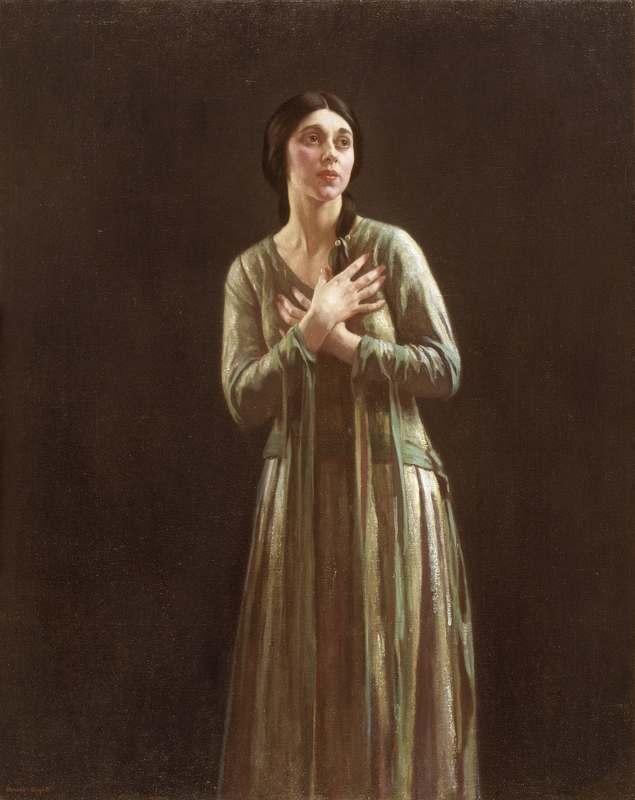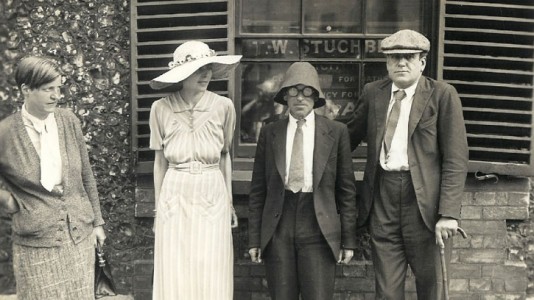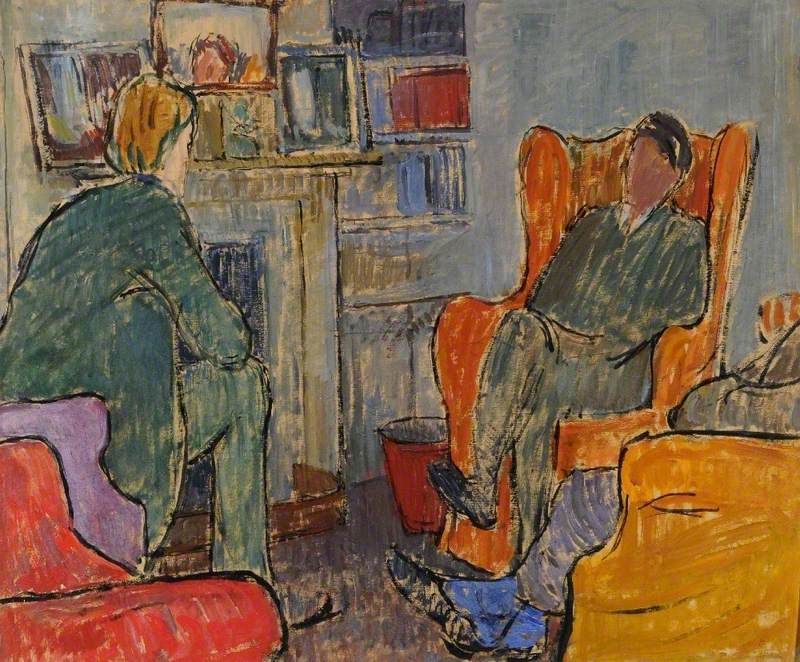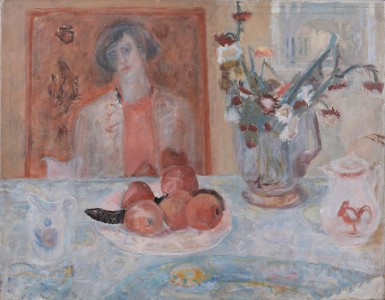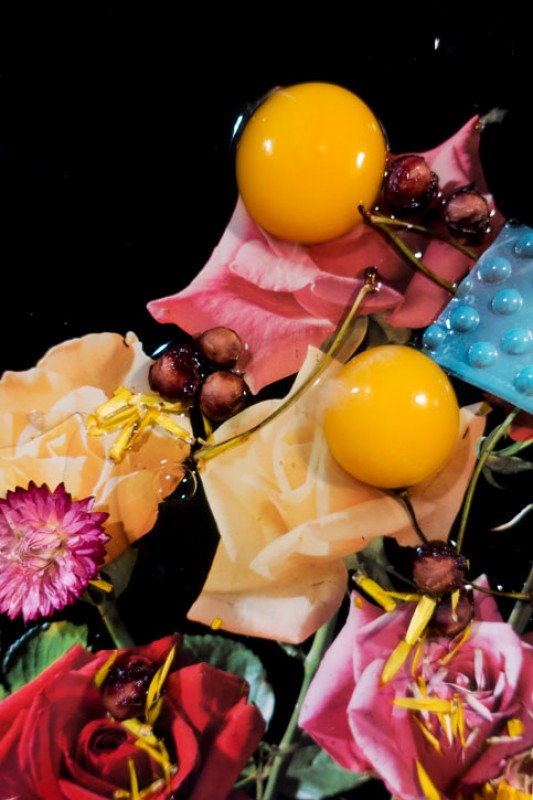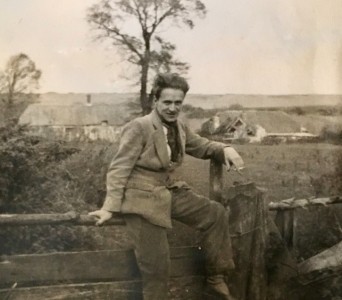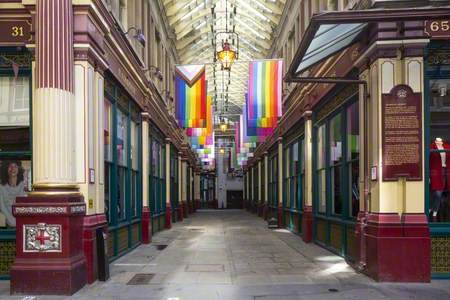This story is part of a series about the representation of multiple gender attraction in arts and heritage, using research undertaken as part of the Whose Heritage? research project at Culture&. For more information, you can read the introduction to the series, and discussion around terminology.
Dora Carrington, who liked to be referred to by only her surname, was a painter and designer. She attended the Slade School of Art in 1910 where she was introduced to the bohemian lifestyle and also the Bloomsbury Group, a set of friends who were artists, writers and intellectuals. It has been said that Carrington was always on the periphery of the group, but she gained further access through her relationship with the writer Lytton Strachey.
Whilst Gwen John's multiple gender attraction is more difficult to find in her biographies, Carrington's sexuality has been explored further. This may be due to Carrington's connection to the Bloomsbury Group, who are known for their more open approach to relationships. Carrington's attraction to multiple genders has usually been framed as a troubled relationship with her sexuality but this narrative is clouded in misunderstandings and stereotypes around bisexuality.
Carrington's time at the Slade was influential in her life in terms of her identity. Her drawings and paintings of naked women were considered controversial at the time. Women at the Slade were only able to paint the half-clothed male form, and so her choice to paint nude women was a bold decision.
We can see from paintings made during her time at the Slade that Carrington had an interest in painting people. Even in paintings made in later life, such as Spanish Landscape with Mountains, the land itself looks like shapely human curves. Throughout her life, she illustrated her letters with pictures of naked women.
During her time at the Slade, she was pursued by Mark Gertler, who also studied there a few years prior. From letters sent from Carrington to Gertler, we can see that Carrington enjoyed her relationship with him but did not want to pursue it sexually.
Carrington possibly drew this portrait of Gertler whilst she was studying at the Slade. The angle of Gertler's pose and the expression on his face shows vulnerability and tenderness. We could read affection for him in this painting but, knowing the context of her relationship, it is also clearly not a sexually charged depiction. She wrote:
'Only I cannot love you as you want me to. You must know one could not do, what you ask, sexual intercourse, unless one does love a man's body. I have never felt any desire for that in my life...'
After her time at the Slade, she was introduced to members of the Bloomsbury Group including Lytton Strachey. Carrington and Strachey's relationship is a wonderful example of the fluidity of sexuality and non-monogamy. Strachey's feelings towards Carrington were considered unusual for him by his fellow members of the Bloomsbury Group as he predominantly had relationships with men.
Carrington's attraction to Strachey has hardly been thoroughly questioned – as it represents a heterosexual desire on her behalf. There are undertones of bisexual erasure in these interpretations, as these reduce Strachey's feelings towards Carrington as a phase in his homosexuality, despite Carrington and himself living together for the rest of their lives.
With the age difference between Carrington and Strachey and the lack of sexual relations between them, their relationship has often been labelled as platonic. Their relationship highlights that whilst Strachey may not have been sexually attracted to women, his relationship with Carrington shows that there are differences between romantic and sexual attraction. His letters to her are full of warmth and intimacy and we can read a romantic affection towards her. He wrote:
'You do know very well that I love you as something more than a friend, you angelic creature, whose goodness to me has made me happy for years, and whose presence in my life has been and always will be, one of the most important things in my life...'
In Carrington's painting Lytton Strachey, there is a level of intimacy in the detail of this work which suggests a closeness between the model and the painter. There is a sense of familiarity in the way Carrington has highlighted certain features of Strachey such as the hands and details of the face. Rather than a forced pose, this position of Strachey lying in bed is natural. This offers an insight into their relationship and what could be imagined to be a regular pastime – Carrington painting and Strachey writing or reading. In her diary, Virginia Woolf wrote:
'After tea Lytton and Carrington left the room ostensibly to copulate; but suspicion was aroused by a measured sound proceeding from the room, and on listening at the keyhole it was discovered that they were reading aloud Macaulay's Essays!'
Carrington, Ralph Partridge and Lytton Strachey at Ham House
unknown photographer 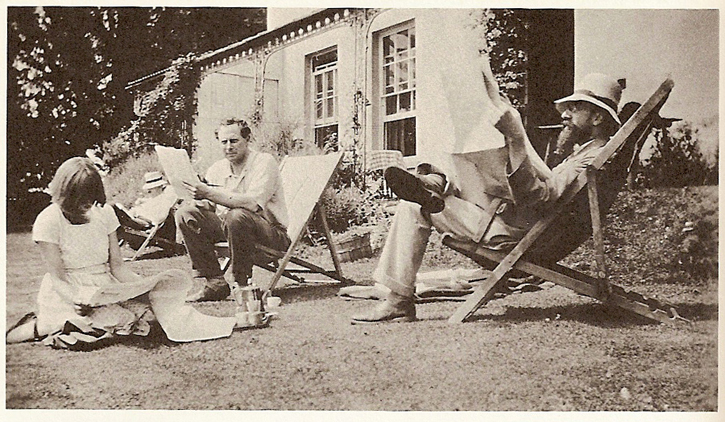
In 1918, Carrington met Ralph Partridge who soon became a lover to both Carrington and Strachey. Carrington agreed to marry Partridge in 1922 and they lived together as a ménage à trois (where a married couple lives with a lover). For Partridge, it is only through his relationship with Strachey that he explored 'homosexual behaviour' and Frances Marshall, who married Partridge after Carrington, claims that he was heterosexual. Using binary language, homosexual and heterosexual, doesn't allow the acknowledgement that people can be attracted to more than one gender. During this time, Carrington, Partridge and Strachey had a range of relationships with other people.
Carrington painted this landscape showing the farm where she and Partridge stayed on their honeymoon.
Scene from the Strachey Gramophone
c.1925
Dora Carrington (1893–1932) 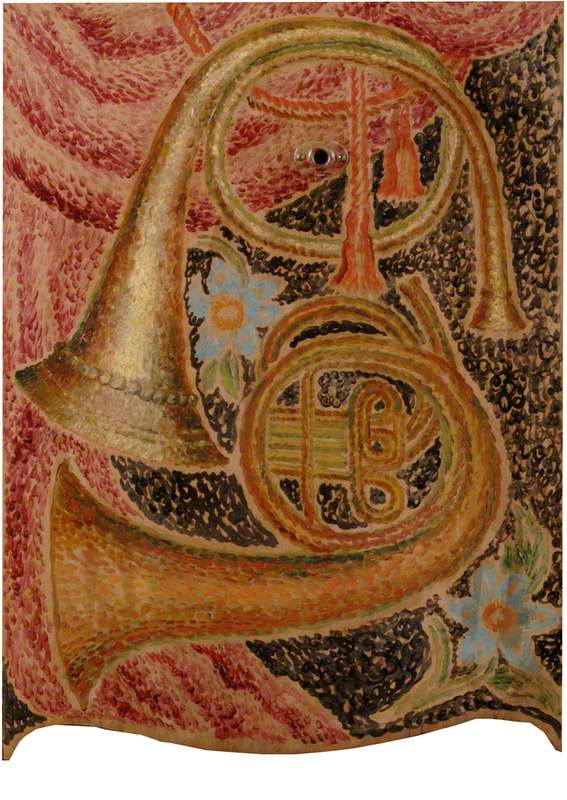
Several of Carrington's works are portraits of people in her life. This highlights how important connecting with others was to her, and yet she struggled to find the balance between making those around her happy and doing creative work. Moving in with Strachey and Partridge, Carrington took on many domestic duties to maintain the house and show her desire to please those around her. This also comes across in her work: her illustrated letters, her interior design of the property, her designs for her friends – such as the gramophone she painted for Alix Strachey, Lytton's sister – and a painting on glass gifted to her friend Iris Tree, who was a poet and actress.
After a few years of marriage to Partridge, Carrington met Henrietta Bingham. In a letter, she wrote that Henrietta was 'my style, pink with a round face, dressed in mannish clothes, with a good natural smile'. It is a joy to read Carrington's letters, especially in the way she writes to others about her feelings towards Henrietta. At a birthday party for the artist Duncan Grant, Carrington met Henrietta again and wrote to her lover Gerald Brenan, 'I became completely drunk and almost made love to her in public.'
You can sense the excitement in Carrington's words in the way she writes about her attraction to Henrietta. There is something thrilling in being able to read what Carrington experienced, accessing a part of herself that she hasn't physically expressed before. In a letter to her friend Alix Strachey: 'Really I confess Alix I am very much more taken with H than I have been with anyone for a long time. I feel now regrets being such a blasted fool in the past, to stifle so many lusts I had in my youth for various females.' It seems from this letter that Henrietta was the first woman that Carrington felt comfortable exploring her attraction to women, despite having these feelings for others before.
One of Carrington's partners was the writer Gerald Brenan. This portrait was painted during their relationship, again highlighting her use of art to acknowledge the significant relationships throughout her adult years. In one of her letters to Brenan, she writes that '...it would have been easier if I had been completely Lesbian'. The use of 'completely Lesbian' highlights this unease of not fitting into the binary of 'heterosexual' or 'lesbian', but also how there didn't seem to be an appropriate term at the time for a person who experiences multiple gender attraction.
In 1932, as Strachey's health was deteriorating from cancer, Carrington attempted to take her own life. It seems the thought of living without Lytton was too much for Carrington to bear. A few weeks after his death, Carrington died by suicide at the age of 38. Carrington's relationship with Strachey was significant to her life, but in a similar way to the narrative of Gwen John's, the typical focus on this relationship meant other aspects of her life have been overlooked and unexplored. This is evidenced in the 1995 film Carrington, which portrays the relationship between Strachey and Carrington and does not mention her attraction to women. This choice reinforces the harmful narrative that women's heterosexual relationships are the most central aspects of their lives.
Carrington's intimate letters allow us rich insight into her relationships and art. However, there needs to be an important shift in the common narrative that Carrington was 'confused'. Personally, I don't think she was confused by her sexuality, but that research has been influenced by the stigma associated with people attracted to multiple genders. This stigma is rooted in a fixed idea of heterosexual/homosexual binary that relies on the assumption that people attracted to multiple genders will gravitate towards these binary identities at some point. There is also a stereotype of promiscuity and bisexuality, and in examples such as Carrington, we see multiple gender attraction and consensual non-monogamy together.
Through the variety of visual and verbal works, we have access to only a glimpse of her life and her understanding of herself. There is so much more to explore in Carrington's multiple gender attraction in her life and art and an important opportunity to dismantle many biphobic stereotypes.
Tabitha Deadman, Whose Heritage? Research Resident at Culture&
Read the other stories in this series, examining the artists Gwen John (1876–1939) and Marie Laurencin (1883–1956) in the context of multiple gender attraction
